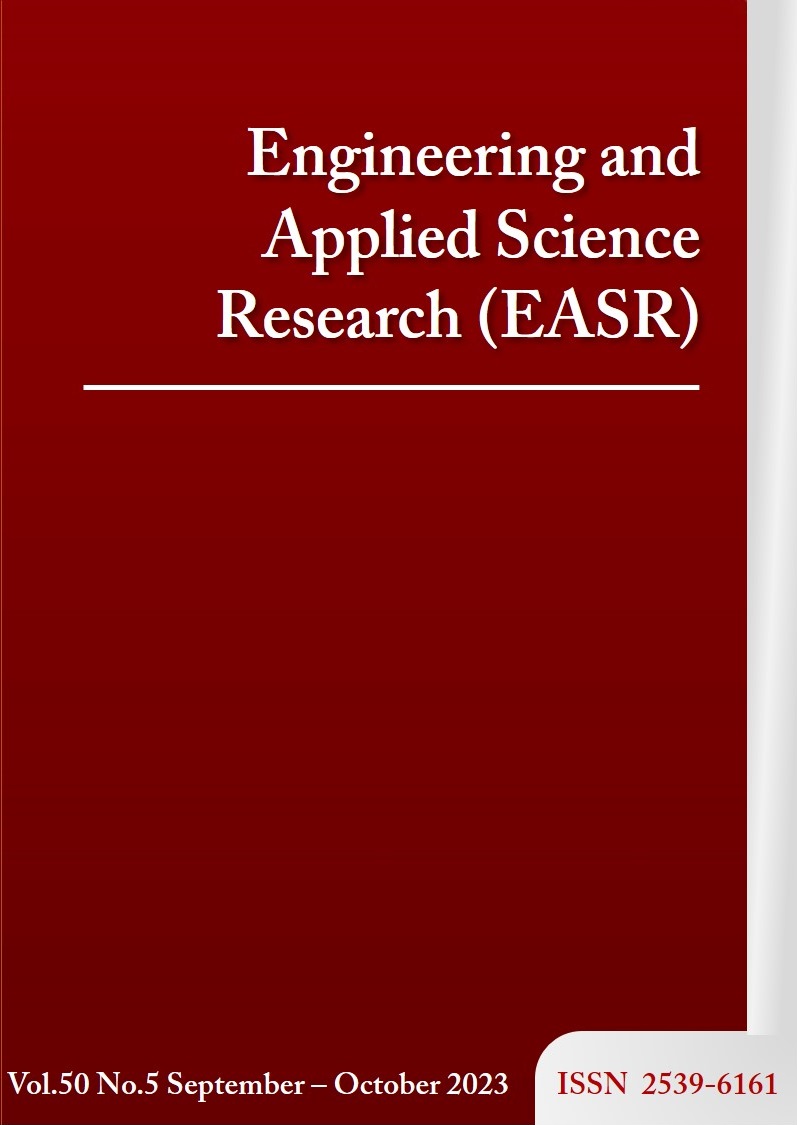Enhancing inbound logistics in the tuna canning industry through simulation: A case analysis
Main Article Content
Abstract
This research proposes an enhancement strategy for inbound logistics planning in the canned tuna industry, focusing on raw material transportation. Currently, the company experiences a 164-day shortfall (67% of total receiving days) in planned versus received raw materials. Using eight trucks, the company achieves an average of 16 daily cycles with a truck utility of 45.58%. Notably, the average pre-dumping fish temperature is -17.19°C, and delivery time is 7.2021 hours. Through simulation analysis, four problem-solving strategies are proposed. One scenario suggests reducing the fleet from eight to six trucks, increasing truck usage utility to 57.91% and reducing driver hiring costs by 25% to 1,440,000 baht per year. Furthermore, delivery time improves by 20.06% to 5.7574 hours. This research offers a strategic approach to optimize inbound logistics, improving efficiency and reducing costs.
Article Details

This work is licensed under a Creative Commons Attribution-NonCommercial-NoDerivatives 4.0 International License.
This work is licensed under a Creative Commons Attribution-NonCommercial-NoDerivatives 4.0 International License.
References
Department of International Trade Promotion. Fresh, chilled, frozen, canned and processed seafood [Internet]. 2021 [cited 2022 Jul 1]. Available from: https://www.ditp.go.th/contents_attach/730239/730239.pdf. (In Thai)
Division of Logistics, Department of Industrial Promotion. Industrial logistics performance index: ILPI [Internet]. 2021 [cited 2021 Mar 1]. Available from: https://dol.dip.go.th/uploadcontent/DOL/FON/iLPI/iLPI.pdf. (In Thai)
Brahmadeep, Thomassey S. A simulation based comparison: manual and automatic distribution setup in a textile yarn rewinding unit of a yarn dyeing factory. Simul Model Pract Theory. 2014;45:80-90.
Neungmatcha W, Boonmee A. Productivity improvement of motorcycle headlight assembly through line balancing using simulation modeling: a case study. Curr Appl Sci Technol. 2021;21(1):12-25.
Phruksaphanrat B, Nunkaew W, Thanaraksakul W. Simulation based on theory of constraints for improvement flex print circuit assembly line. KKU Eng J. 2007;34(4):459-464. (In Thai)
Pan JCH, Wu MH, Chang WL. A travel time estimation model for a high-level picker-to-part system with class-based storage policies. Eur J Oper Res. 2014;237(3):1054-66.
Huihui S, Xiaoxia M, Xiangguo M. Simulation and optimization of warehouse operation based on Flexsim. J Appl Sci Eng Innov. 2016;3(4):125-8.
Phruksaphanrat B. Analytic hierarchy process for cell layout selection and simulation for electronic manufacturing service plant. KKU Eng J. 2012;39(4):365-74. (In Thai)
Samanphan W, Kantanantha N. Plant layout improvement for capacity balancing by problem modeling simulation technique in hard disk drive industry. KKU Eng J. 2013;40(2):173-83. (In Thai)
Rohleder TR, Bischak DP, Baskin LB. Modeling patient service centers with simulation and system dynamics. Health Care Manag Sci. 2007;10(1):1-12.
Wannapop R, Jearsiripongkul T, Jiamjiroch K. Effect of elevation to accuracy in water pipeline network simulation. KKU Eng J. 2016;43(S3):454-8.
Nundee P, Neungmatcha W, Boonmee A. Determining the number of trucks suitable for increasing the utilization of sugarcane mechanical harvesters using simulation models. Thai J Oper Res. 2018;6(1):22-30. (In Thai)
El-Naggar ME. Application of queuing theory to the container terminal at Alexandria seaport. J Soil Sci Environ Manage. 2010;1(4):77-85.
Fialkin V, Veremeenko E. Characteristics of traffic flow management in multimodal transport hub (by the example of the seaport). Transp. Res. Procedia. 2017;20:205-11.



